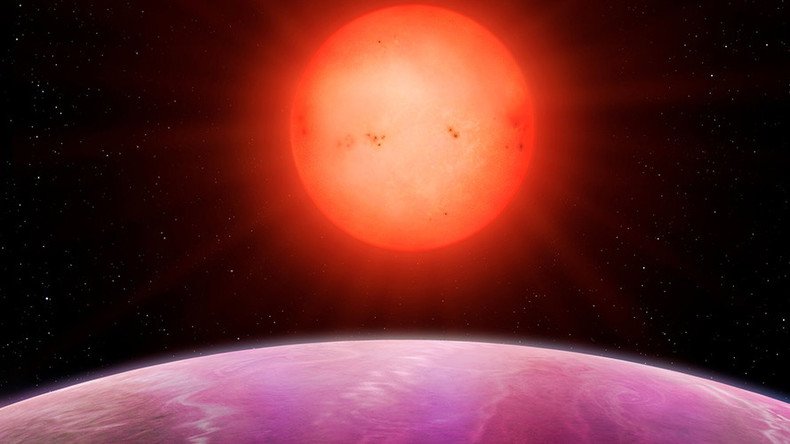Newly-discovered ‘monster planet’ upends theories on astronomy

A team of researchers has discovered a gas giant roughly the size of Jupiter orbiting a companion star smaller than our own sun. The discovery has upended current thinking on the limitations of planet formation in the universe.
NGTS-1b is the largest planet relative to its star ever discovered in the universe and dispels pre-existing theories that average-sized stars could not form gas giant planets of such immense size. It’s also the first planet discovered by the the Next-Generation Transit Survey observatory which hunts for new planets as they traverse their stars.
"The discovery of NGTS-1b was a complete surprise to us – such massive planets were not thought to exist around such small stars. This is the first exoplanet we have found with our new NGTS facility and we are already challenging the received wisdom of how planets form,” said Daniel Bayliss, the lead author of the research said in the University's press release.
“Our challenge is to now find out how common these types of planets are in the galaxy, and with the new NGTS facility we are well-placed to do just that,” he added.
This is how ‘intense’ solar flares look from space (VIDEO) https://t.co/qe59nwZRrapic.twitter.com/7ooGOzSMAS
— RT (@RT_com) October 31, 2017
NGTS-1b is 600 light years away from us and is a gas giant roughly the same size as Jupiter but orbits a star only half the size of our own sun in terms of radius and mass. It’s as hot as Jupiter (530 degrees Celsius, 986 Fahrenheit) and at least as large but possesses approximately 20 percent less dense.
However, it lies at just three percent the distance between Earth and our sun, meaning a year on the planet lasts just 2.6 days. The planet orbits a red M-dwarf star, the most common type of star in the universe, which leads researchers to believe there may be far more gas giants waiting to be found.
‘Planet 9’: Evidence is mounting https://t.co/mJL9jg9rXtpic.twitter.com/nMF4olR0NX
— RT (@RT_com) October 19, 2017
“NGTS-1b was difficult to find, despite being a monster of a planet, because its parent star is small and faint. Small stars are actually the most common in the universe, so it is possible that there are many of these giant planets waiting to found,” said Professor Peter Wheatley, head of the NGTS team.
“Having worked for almost a decade to develop the NGTS telescope array, it is thrilling to see it picking out new and unexpected types of planets. I'm looking forward to seeing what other kinds of exciting new planets we can turn up,” Wheatley said.
The observatory monitors the night sky and detects red light emanated by stars using ultra-sensitive cameras. In this particular instance, the system detected a break in starlight every 2.6 days. The team then tracked the planet's orbit around the star, allowing them to calculate the size, position and mass of NGTS-1b by measuring the radial velocity or the anomalies in its orbit due to variations in the planet's gravity.












